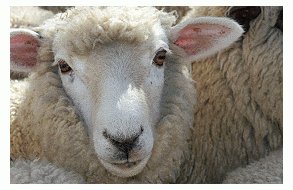
By Allan Barber
Federated Farmers’ Meat Options discussion paper, written by Sarah Crofoot, does an extremely good job of laying out the alternative market orientations companies can adopt.
It presents three different focus options from which farmers are asked to select their set of preferences.
It should be noted up front that the discussion paper is aimed at Federated Farmers’ farmer members and its key purpose is to engage those farmers in thinking about what they want their industry to look like in 5,10 or 20 years from now.
The final output will not be binding on anybody, but it will provide a more comprehensive summary of farmer opinion than the feedback from the series of Meat industry Excellence meetings.
The paper starts with a late 1980s definition of the industry’s unique characteristics quoting Anita Busby, Editor of Meat Producer at the time:
Meat industry people don’t need to take advice or listen to new ideas. They already have the answers. They strangle new thoughts at conception. If that fails, they discredit the source.
If you haven’t been in the meat industry for years, you don’t know what you are talking about. If you have, you’re washed up…
Sarah Crofoot with the confidence of youth has nevertheless taken the bold step of producing a set of ideas which merit serious consideration.
It is now 30 years since subsidies were removed, even longer since the deregulation of the meat industry, and despite many positive developments, the industry still has fundamental structural problems.
None of the strategic plans or attempts at restructuring has really worked for long, while the global success of the dairy industry has resulted in a massive change in land use away from sheep and beef farming. Whereas pine trees were the main alternative land use in the late 80s and early 90s, dairy has taken over as the major threat, boosted by global demand and irrigation.
The Options paper cites the continuing importance of the red meat industry to the New Zealand economy, but laments the lack of profitability at both production and processing ends of the industry.
This single fact poses the biggest threat to the industry’s future.
Crofoot suggests three different market orientations: product leadership, focused on innovation and speed to market, customer intimacy, based on economies of scope and establishing customer loyalty as these organisations focus on the lifetime value of a customer, and operational excellence which focuses on economies of scale.
The implication is that no single company should attempt to adopt two let alone three of these market orientations, but should focus on one as its prime strategy of choice.
Silver Fern Farms, the largest company, appears to fall into the trap of trying to adopt all three at various times with limited success and serious lack of profit.
She also presents three key sections for considering the strategic options open to the industry – behaviour focus, processor focus and marketing focus.
-------------------------------------------------------------------------------------------------------------------------------------------
Farms For Sale: the most up-to-date and comprehensive listing of working farms in New Zealand, here »
-------------------------------------------------------------------------------------------------------------------------------------------
The one that interests me most is the focus on behaviour.
Unless farmers align themselves with one processor, the industry will not achieve the fundamental change required.
Restructuring of the processing sector must happen sooner or later, but it will never achieve a satisfactory final state without the behavioural change.
I get the impression from the paper that a preferred option is the establishment of a toll processing sector which would not be responsible for marketing, while marketing would ideally be a co-opetition model where companies compete in some markets and collaborate in others.
Single desk selling would be impossible to set up and, although superficially attractive, has been tried before without success in the meat industry.
It will be interesting to see farmer reaction to the set of choices they have been presented and even more so to observe the processor and exporter reaction to this.
History doesn’t suggest too much positive response from processors and exporters if they are faced with reducing the scale and scope of their activities.
The biggest challenge will be to get all the parties to agree on a preferred strategy, especially if it calls for a curtailment of activities previously seen as an inalienable right.
To reiterate the thought from Anita Busby 25 years ago, meat industry people don’t need to take advice or listen to new ideas. They already have the answers.
This may have changed to some extent, but patch protection is still alive and well.
---------------------------------------------------------------------------------------
Here are some links for updated prices for
- lamb
- beef
- deer
- wool
M2 Bull
Select chart tabs
---------------------------------------------------------------------------------------
Allan Barber is a commentator on agribusiness, especially the meat industry, and lives in the Matakana Wine Country where he runs a boutique B&B with his wife. You can contact him by email at allan@barberstrategic.co.nz or read his blog here ».




We welcome your comments below. If you are not already registered, please register to comment.
Remember we welcome robust, respectful and insightful debate. We don't welcome abusive or defamatory comments and will de-register those repeatedly making such comments. Our current comment policy is here.